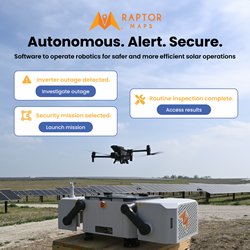SEIA: Trade Case Petitioners Brought Collapse of Businesses on Themselves
The comments were submitted today in response to a petition filed by Suniva and later joined by SolarWorld regarding crystalline silicon photovoltaics (CSPV), the dominant form of solar today.
WASHINGTON, D.C. - Suniva and SolarWorld have failed to show that a rising level of imports caused them serious injury and left them unable to compete in the U.S. market, the Solar Energy Industries Association (SEIA) and others stated in pre-hearing written arguments to the U.S. International Trade Commission (ITC). If the ITC agrees with SEIAs arguments, such a failure would result in an ITC finding of no injury, ending the case.
The comments were submitted today in response to a petition filed by Suniva and later joined by SolarWorld regarding crystalline silicon photovoltaics (CSPV), the dominant form of solar today. Both companies are foreign-owned and in bankruptcy. Their financiers are looking for U.S government protection after receiving tens of millions of dollars in federal and state handouts, but failing to compete. The SEIA brief, backed by multiple industry statements, shows a long history of management and technical failures by the petitioners.
In an executive summary of its remarks, SEIA points out that the petitioners were unable to produce the needed solar modules to succeed in the ever-changing solar markets. Utility-scale projects use 72-cell modules, which neither Suniva nor SolarWorld could produce in the quantities demanded by the booming U.S. marketplace. Therefore, imports of solar cells and modules were pulled into the U.S. utility market by increased demand that could not be met domestically.
"In the utility segment, the petitioners were unable to manufacture and supply 72-cell modules required to meet demand," SEIA said. "Therefore, to meet utility-scale demand, increasing CSPV imports were pulled into the U.S. utility market - they did not "flood" the market - to supply developers with necessary products."
Domestic producers also missed many opportunities for residential business.
"SolarWorld and Suniva failed to fully qualify their product with major purchasers," SEIA said. "Suniva and SolarWorld both experienced complaints from a litany of dissatisfied customers over late shipments, damaged products and general product unreliability."
Among SEIAs other points showing the real reasons for falling solar prices and Suniva and SolarWorld's failure to compete, independent of import growth:
• The petitioners suffered from a series of poor business decisions that negatively affected their ability to compete.
• CSPV product - whether domestic or imported - entering the utility segment saw prices fall in order to compete with other sources of energy on the electricity grid, such as wind, natural gas and thin-film solar.
• The downward trend in CSPV pricing during the period of interest was heavily influenced by technological advancements that have unfolded steadily since the 1970s.
For a copy of the full executive summary, please go to http://www2.seia.org/e/139231/ing-brief-201-solar-trade-case/23xyss/166011245
###
About SEIA®:
Celebrating its 43rd anniversary in 2017, the Solar Energy Industries Association® is the national trade association of the U.S. solar energy industry, which now employs more than 260,000 Americans. Through advocacy and education, SEIA® is building a strong solar industry to power America. SEIA works with its 1,000 member companies to build jobs and diversity, champion the use of cost-competitive solar in America, remove market barriers and educate the public on the benefits of solar energy. Visit SEIA online at www.seia.org.
Featured Product

